|
||||||||||||||||||||||||||
 |
 |
|||||||||||||||||||||||||
|
|

|
|||||||||||||||||||||
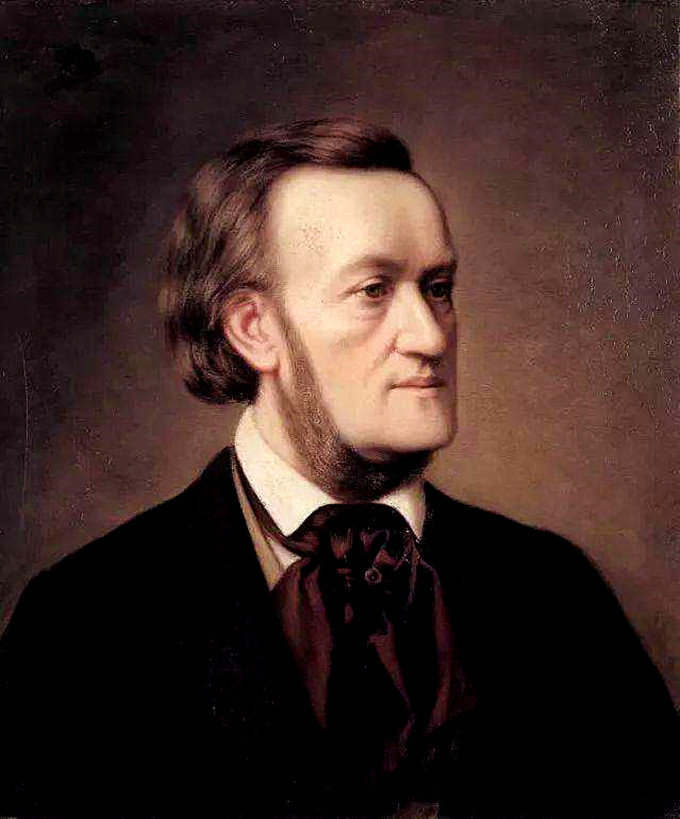 |
|
||||||||||||||||||||
| 威廉·理查德·瓦格纳(Wilhelm Richard Wagner,1813-1883) | |||||||||||||||||||||
[中字]【瓦格纳歌剧】纽伦堡的名歌手 (大都会歌剧院) |
|||||||||||||||||||||
Die Meistersinger von Nürnberg |
|||||||||||||||||||||
| The famous singer of Nuremberg died Meistersinger von Nurnberg | |||||||||||||||||||||
|
|
|||||||||||||||||||||
|
音乐历史上的今天
1868年6月21日,瓦格纳的《纽伦堡的名歌手》在慕尼黑参加竞赛。剧中影射的乐评家爱德华·汉斯利克称这部歌剧“不是纯正的音乐天才而是由一个精明的投机者所作,是一半诗,一半音乐家的七彩组合,他发明了一种表面上天花乱坠实际上是七拼八凑的新系统。这种系统从根本原则上就是错误的,所以其实践既不美丽也无音乐性可言”。 |
|
||||||||||||||||||||
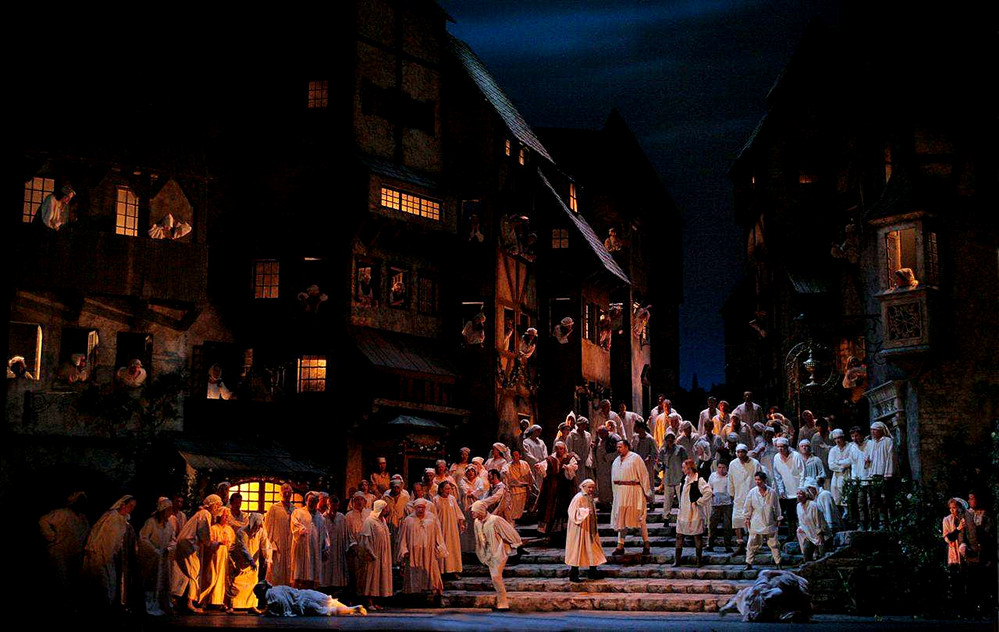 |
|||||||||||||||||||||
| 美国大都会歌剧院演出瓦格纳歌剧《纽伦堡的名歌手》的场景 | |||||||||||||||||||||
| The Metropolitan Opera's performance of Wagner's opera "The Famous Singers of Nuremberg" | |||||||||||||||||||||
|
|
|||||||||||||||||||||
|
Today in the
history of music On June 21, 1868, Wagner's famous Singer of Nuremberg entered the competition in Munich.The opera's allusion to music critic Edward Hanslick called it "not a pure musical genius but a shrewd speculator, a colorful combination of half poetry, half musicians, who invented a new system that appeared to be a riot but was really a patchwork.The system is fundamentally wrong, so the practice is neither beautiful nor musical. Wagner's The Famous Singer of Nuremberg: A three-act opera, conventionally abbreviated as the Famous Singer.Source of German composer Wagner wrote and composing music, there are three, one for romantic writer hoffman's novel "hooper boss Martin and his followers", secondly, the playwright Dan hart's drama written by the Hans sacks, 3 it is according to the drama, by fatigue and static with help from friends reg personally writing the script and the composition of light opera "Hans," (1840).It premiered at the National Theatre of the Imperial Court in Munich on 21 June 1868. The story takes place in Nuremberg, Germany, in the mid-16th century.Nuremberg was a free city and one of the key towns of the Renaissance in Northern Europe.The story revolves around a "Mastersinger" society of amateur poets and composers.Famous singers like to express their music skillfully, and they follow many complicated rules in composing and singing.What is most fascinating about this work is that it depicts the characteristics of Nuremberg and the traditions of the Famous Singers society.One of the leading roles in drama, "famous singer" Shoemaker Hans · saxophone, more draw materials from a real historical figure Hans · saxophone -- on history the most famous "famous singer". Synopsis: Poger, a goldsmith in the town, announces that he will marry his daughter Eva to the winner of a Midsummer singing contest. The winner must be a famous singer.However, Eve had already fallen in love with the young knight Walther.In order to marry Eve, Walter decided to take part in the competition.Unfortunately, because Walters knew nothing about singing and wrote songs that did not fit the style of famous singers, he could not pass his experiment of becoming a famous singer. Act 2: Clerk Beckmesser, who also wants to marry Eve, attends a singing contest, which causes a riot. Act 3: With the help of the famous shoemaker Hans Sachs, Walter finally defeats his rival, Baker Messer, and wins the Prize. Wagner's opera in myth, or themes of the tragic story of a legendary singer of nuremberg this comedy is the only exception works ─ ─ the story of the opera is Wagner, write your own content, and using the real historical background as the stage, so it occupies in many Wagner's opera a unique location.In addition, the opera contains some elements that Wagner seldom used in opera, such as rhyme, lyric tone, chorus, quintet, ballet and so on.Although Wagner took the famous singer as the theme of the play, but did not use the music of the time in the opera.But with reality and human nature as the theme, the music is always in the atmosphere of comedy, bright and lively, diatonic counterpoint melody with major tone, fresh and three-dimensional.As for the singing style of the famous singer, Wagner used only the lyrics of the play, which ended in act 2 and were written in prose.These were the successes of an innovative breakthrough by Wagner at the time. Richard Wagner did not use the music of his time in opera, though he made it his subject matter for a famous singer.But with reality and human nature as the theme, the music is always in the atmosphere of comedy, bright and lively, diatonic counterpoint melody with major tone, fresh and three-dimensional.As for the singing of famous singers, Wagner only used the words of the play at the end of the second act and completed the play in prose.These were the successes of an innovative breakthrough by Wagner at the time.At five hours and 15 minutes, "The Famous Singers of Nuremberg" is second only to the nearly eight-hour opera "The Ring of Nibelungen." Today's video: The Famous singer of Nuremberg (Metropolitan Opera). |
|
||||||||||||||||||||
 |
|||||||||||||||||||||
| 歌剧《纽伦堡的名歌手》剧中的主角之一,“名歌手”鞋匠汉斯·萨克斯,更是取材自一位真实的历史人物汉斯·萨克斯──历史上最知名的“名歌手”。 | |||||||||||||||||||||
| One of the leading roles in drama, "famous singer" Shoemaker Hans · saxophone, more draw materials from a real historical figure Hans · saxophone -- on history the most famous "famous singer". | |||||||||||||||||||||
 |
|||||||||||||||||||||
| 德累斯顿宫廷剧院,瓦格纳曾在这里担任指挥 | |||||||||||||||||||||
| Dresden Palace Theatre, where Wagner once conducted | |||||||||||||||||||||
 |
|||||||||||||||||||||
| 德累斯顿宫廷剧院门前精美雕塑,这是十九世纪的遗迹。 | |||||||||||||||||||||
| The exquisite sculpture in front of the Palace Theatre in Dresden is a relic of the 19th century. | |||||||||||||||||||||
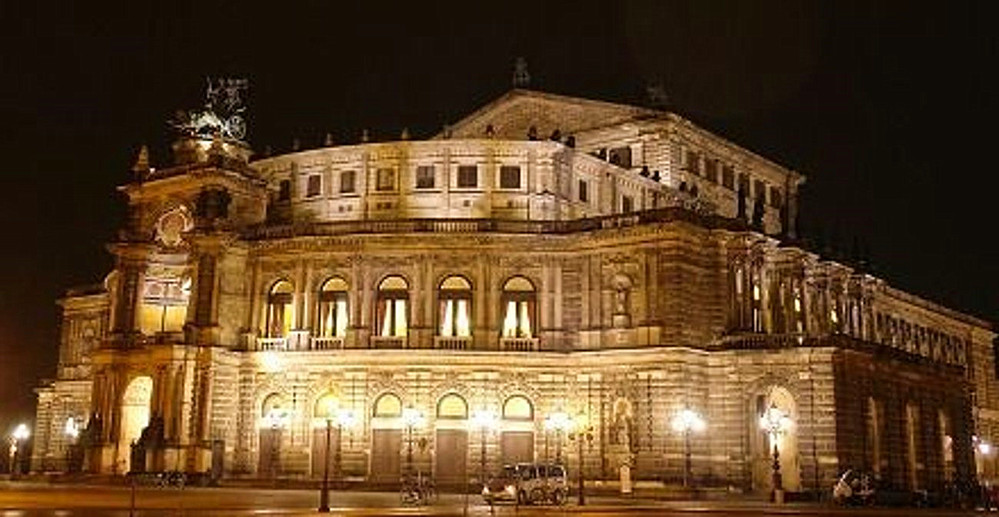 |
|||||||||||||||||||||
| 德累斯顿宫廷剧院夜景 | |||||||||||||||||||||
| Dresden Palace Theatre at night | |||||||||||||||||||||
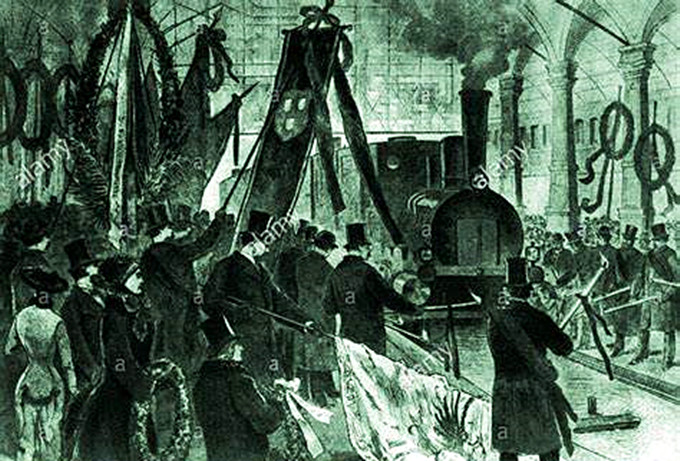 |
|||||||||||||||||||||
| 崇拜瓦格纳的人们汇集在慕尼黑火车站在默默祷告。 | |||||||||||||||||||||
| Wagnerian worshippers gather at the Munich railway station to pray in silence. | |||||||||||||||||||||
| 理查德·瓦格纳去世后(1883年),他的遗体经慕尼黑运往拜罗伊特,沿途每一个车站都有无数人汇集在那里默默祷告。这是瓦格纳的棺材在慕尼黑火车站的到来。在贝希斯坦的一幅画之后。他的崇拜者们聚集在一辆火车周围,手持花环和旗帜。德国作曲家:1813年5月22日- 1883年2月13日。有色的版本。-图像ID: KF0J1F | |||||||||||||||||||||
| Arrival of Richard Wagner 's coffin at Munich train station, 1883. After a drawing by L. Bechstein. Showing a crowd of his admirers gathering round a train, holding garlands and banners. German composer: 22 May 1813 - 13 February 1883. Tinted version. Tinted version. - Image ID: KF0J1F | |||||||||||||||||||||
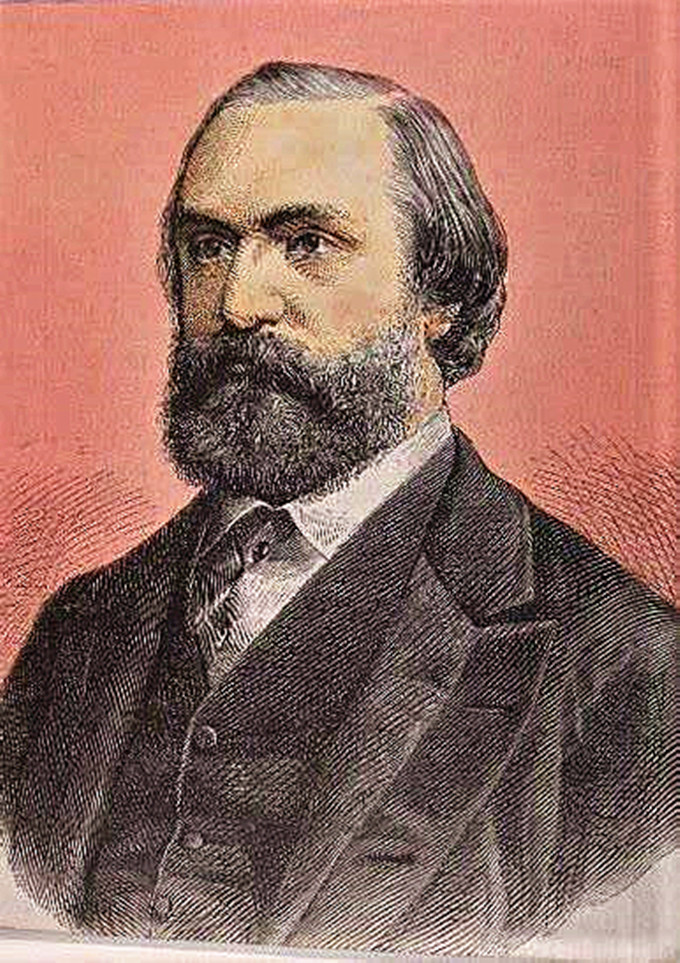 |
|||||||||||||||||||||
| 汉斯利克(Eduara Hanslick,1825-1904年) | |||||||||||||||||||||
|
汉斯利克(Eduara
Hanslick,1825-1904年),奥地利音乐学家、评论家、美学家。1825年9月11日生于布拉格,1904年8月6日卒于巴登。早年在布拉格和维也纳学法律和哲学,获博士学位。在布拉格时师从V.J.K.托马谢克学音乐。1856年被任命为维也纳大学美学和音乐史讲师,1861年被聘为教授。1848-1849年任《维也纳报》的评论员。1855-1864年任《新闻报》、《新自由报》的评论员。他是1867和1878年巴黎博览会及1873和1892年维也纳博览会音乐部的评审员。1895年退休。 汉斯利克提倡纯音乐的理论,认为“音乐就是音响运动的形式”,奠定了近代自律论音乐美学的理论基础。他反对浪漫主义美学的激情论和启蒙主义者认为语言音调决定音乐表现力的观点,他以康德派的J.F.赫尔巴特的美学观点为依据,坚持形式主义美学的立场,反对R.瓦格纳、F.李斯特和H.沃尔夫。当时曾引起A.W.安布罗斯、P.von 豪泽格尔等人的反驳。他的观点对西欧的音乐学有很大影响,是H.里曼和G.阿德勒的音乐风格理论的基础,其影响今日犹存。但他在具体评价音乐现象时却未能坚持自己的美学原则。他推崇J.S.巴赫、G.F.亨德尔,尤其是L.van 贝多芬。他认为R.舒曼是贝多芬以后最杰出的作曲家,赞扬同时代的J.勃拉姆斯,欣赏G.比才的《卡门》。他有多方面的艺术修养,文笔隽永。他的著作是研究19世纪西欧美学思想的丰富资料。他的主要著作有,《论音乐的美》(1854,有中译本)、《维也纳的音乐会史》2卷(1869、1870)、《现代歌剧》9卷(1875-1900)、《我的生平》(1894)以及大量评论文章。 |
|||||||||||||||||||||
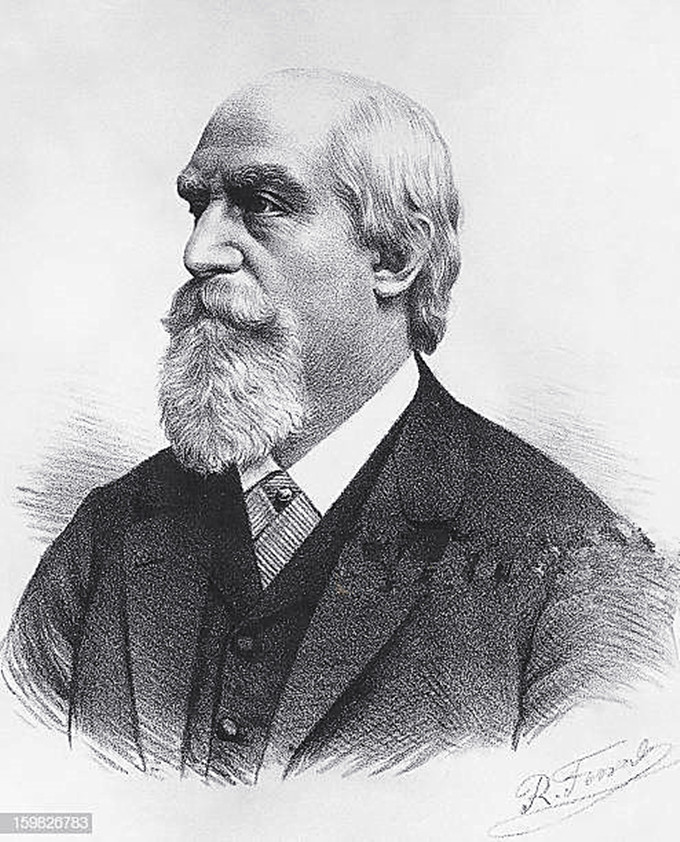 |
|||||||||||||||||||||
| 汉斯利克(Eduara Hanslick) | |||||||||||||||||||||
|
Eduara Hanslick
(1825-1904) was an Austrian musicologist, critic and
aesthete.Born in Prague on 11 September 1825 and died in Baden
on 6 August 1904.He studied law and philosophy in Prague and
Vienna at an early age, and received his doctor's degree.When he
was in Prague, he studied with V.J.K.Tomasek studied music.He
was appointed lecturer in aesthetic and musical history at the
University of Vienna in 1856 and professor in 1861.He was a
critic for The Vienna newspaper from 1848 to 1849.From 1855 to
1864, he was a commentator for La Stampa and The New Liberty.He
was a judge of the music department at the Fairs of Paris in
1867 and 1878, and Vienna in 1873 and 1892.He retired in 1895. Hanslick advocated the theory of pure music and believed that "music is the form of sound movement", which laid the theoretical foundation of modern self-discipline theory of music aesthetics.He rejects both the romantic aesthetic passions and the Enlightenment view that the tone of language determines the expressiveness of music.Based on Herbart's aesthetic views, he adhered to the position of formalist aesthetics and opposed R.Wagner, F.Liszt and H.Wolff.It caused a.W.Retorts Ambrose, P.V. Hauser and others.His ideas, which had a great influence on western European musicology, were H.Liman and G.The foundations of Adler's theory of musical style are still there today.However, he failed to adhere to his aesthetic principles in his specific evaluation of music phenomenon.He is a fan of J.S.Bach, G.F.Handel, especially L. Van Beethoven.He thinks that R.Schumann is the most outstanding composer since Beethoven, praising his contemporary J.Brahms, appreciate G.Bizet's Carmen.He has many artistic accomplishments, and his writing is meaningful.His work is a rich source for the study of 19th century Western European aesthetic thought.His major works include On the Beauty of Music (1854, translated into Chinese), A History of the Concert in Vienna (2 volumes (1869, 1870), Modern Opera (9 volumes (1875-1900), My Life (1894) and numerous critical articles. |
|||||||||||||||||||||
 |
|||||||||||||||||||||
|
|
|||||||||||||||||||||
| 未得原作者编者授权严禁转载www.mt77.com任何内容 | |||||||||||||||||||||
|
|
|
||||||
|
copyright © 2003-2005 xilu.com all rights reserved. |
||||||
|
|
||||||












